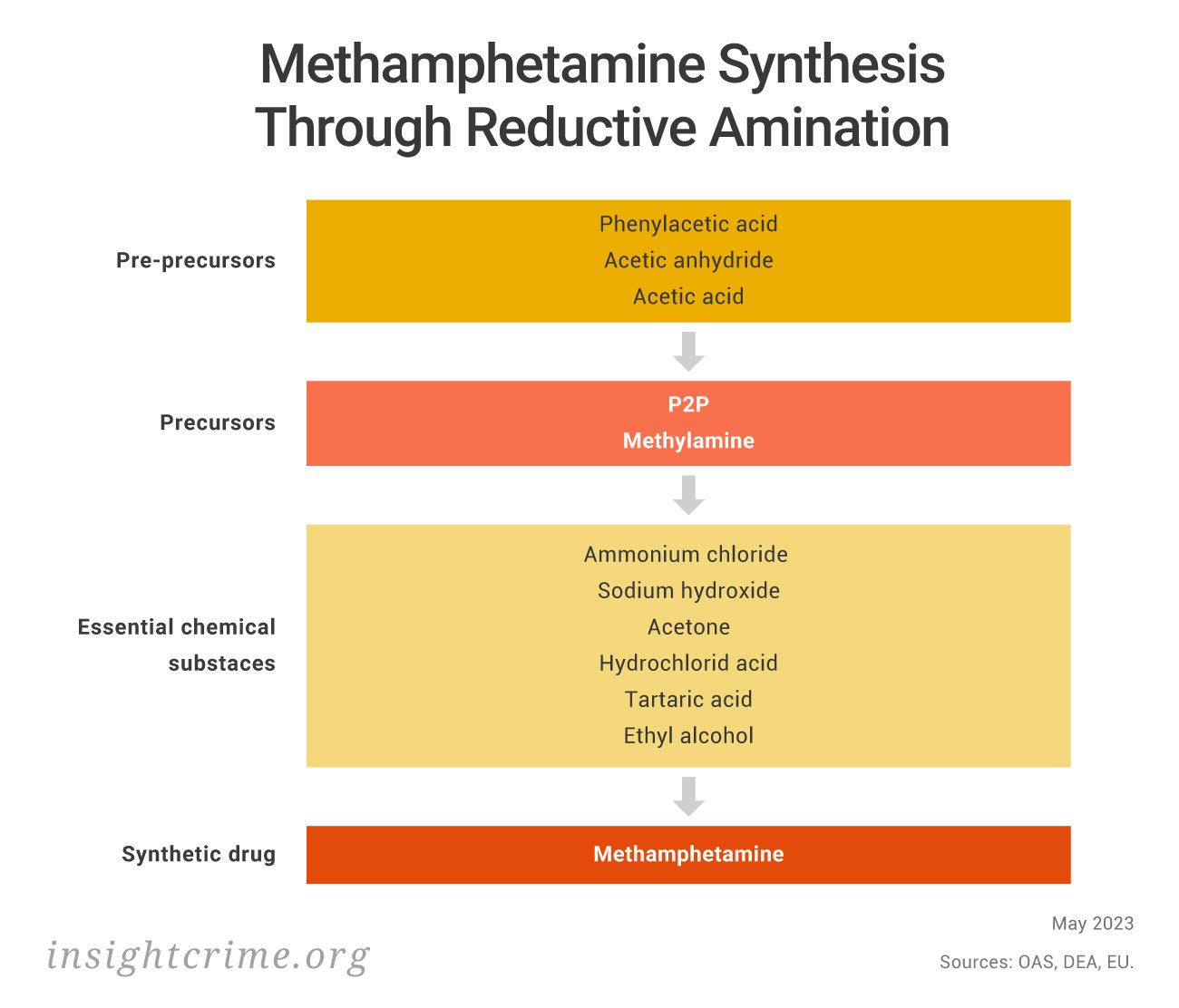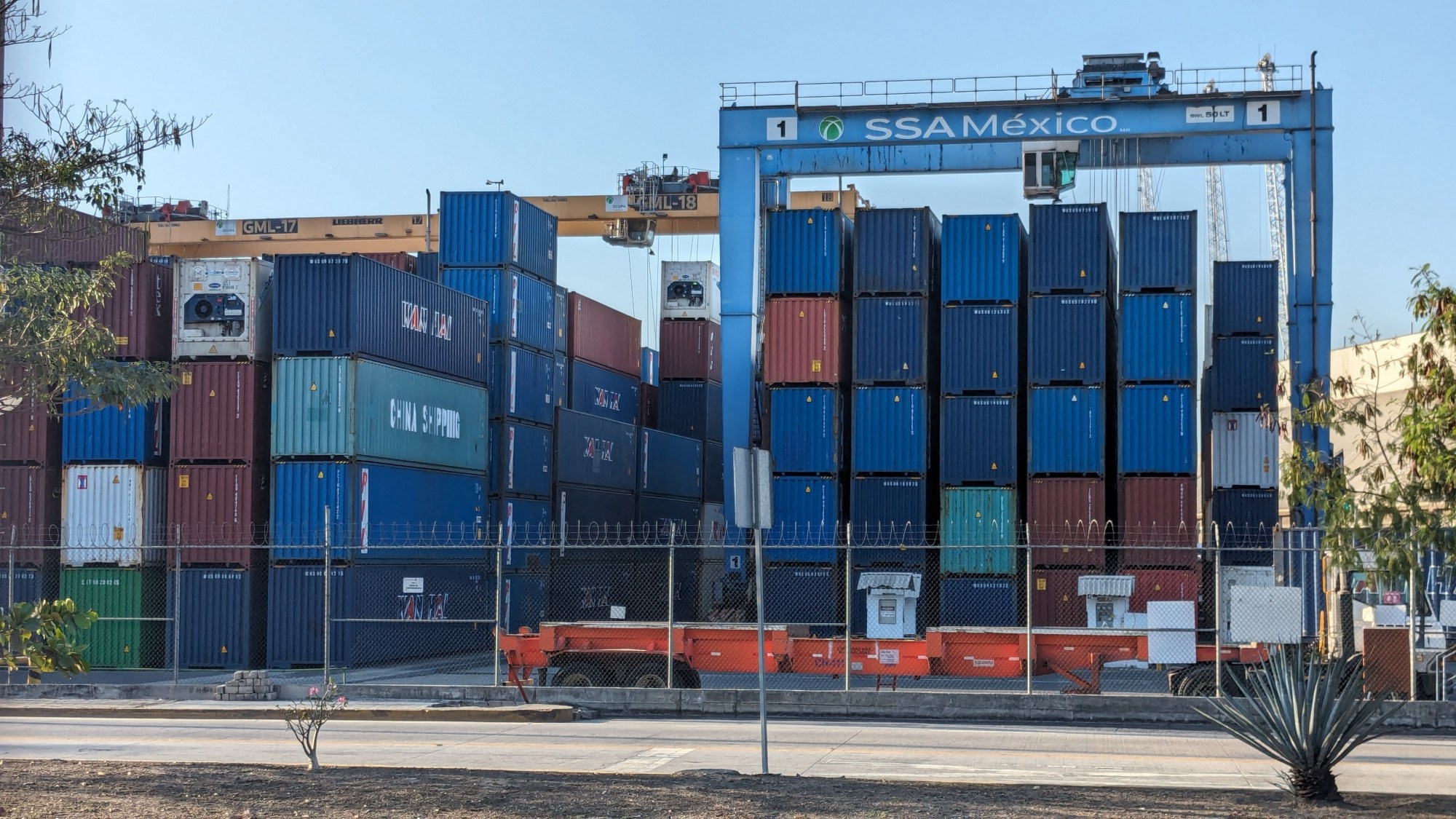Mexico’s navy warned of an increase in the use of less regulated chemicals for methamphetamine production this week, confirming an innovative trend emerging from the criminal organizations behind synthetic drug manufacturing.
Officials from Mexico’s Navy Secretariat (Secretaría de Marina – Semar) interviewed in the port of Manzanillo, told the La Jornada newspaper on July 6 that Mexican criminal groups are producing their own precursor chemicals to make methamphetamine, rather than importing them from abroad.
Precursor chemicals are the main ingredient in the synthetic drug production process and, in the case of Mexican methamphetamine, the most common ones are 1-phenyl-2-propanone (P2P) and methylamine.
SEE ALSO: Making Synthetic Drugs: A Primer*
To manufacture both, producers use pre-precursors and other essential chemicals such as solvents, catalysts, and binders, which are dual-use substances. These chemicals, in addition to being used for illicit purposes, are widely traded legally to supply a variety of industries, including pharmaceuticals, petrochemicals, cosmetics, food, and cleaning products.
According to Semar sources who spoke to La Jornada in the port, they have detected an increase in the importation of dual-use chemicals since around 2022. At the same time, imports of precursor chemicals have dropped.
“There are records that give us certainty that these substances are used in the manufacture of chemical precursors for illicit drugs,” a naval official told La Jornada.
 The statement came just days after the seizure of 88 tons of acetic acid in Manzanillo, which sits on the Pacific coast in the state of Colima. The substance is mainly used to produce vinegar but can also be used as a pre-precursor in the production of methamphetamine.
The statement came just days after the seizure of 88 tons of acetic acid in Manzanillo, which sits on the Pacific coast in the state of Colima. The substance is mainly used to produce vinegar but can also be used as a pre-precursor in the production of methamphetamine.
As a result, the importation and sale of acetic acid is monitored in Mexico, which means that companies must justify their intended use to the authorities and make their supply chain transparent. According to Semar, the seizure in Manzanillo occurred after the importer failed to justify the substance’s place of origin.
InSight Crime Analysis
Semar’s recent comments are in line with InSight Crime’s research into Mexico’s precursor chemical supply chain, which found that the methamphetamine production process in Mexico has become more sophisticated.
Initially, Mexican producers used ephedrine as the main precursor for methamphetamine, but following the Mexican government’s imposition of stricter controls on the substance in 2008, they migrated to the P2P and the methylamine method. This method is complicated, according to several specialists consulted by InSight Crime, but allows for a greater diversity of chemical synthesis routes, making it easier for producers to substitute substances they don’t have access to.
SEE ALSO: How Precursor Chemicals Sustain Mexico’s Synthetic Drug Trade
Today, P2P and methylamine are strictly controlled. Mexican producers have stopped importing them from China – one of the main countries supplying the substances – and have learned to synthesize them in the same clandestine laboratories in which they make methamphetamine from pre-precursors legally marketed in Mexico.
So far, this trend isn’t evident in fentanyl production, mainly because fentanyl pre-precursors have few legal uses. However, it’s something that could happen if producers begin to access less regulated substances from which they can synthesize pre-precursors and subsequently precursors.
*Sara García, Parker Asmann, and Beatriz Vicent contributed to the reporting for this article.
Featured image: Containers in the port of Manzanillo, Colima, México. Credit: Victoria Dittmar/InSight Crime

